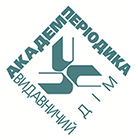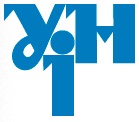HIGHER EDUCATION SERVICES: THE STRUCTURE OF THE PROPOSAL AND THE LEVEL OF COMPETITION
Series "Economy": Economic and legal problems of regional development
Abstract
The renewal of the development strategy requires that higher education establishments make a determining decision — to continue functioning in the developed field of knowledge, expending the specialties spectrum, or to investigate new fields. The accumulated experience of market reforms allowed the establishments to realize the educational potential (the licensed amount) to a greater extent. The conducted unbiased analysis showed the dependence of the implementation of educational potential by institutions of higher education on the degree of competitive struggle in the market of educational services in various fields of knowledge. The structure of the fields of knowledge and specialties at the education services market in Poltava region is the consequence of understanding the educational needs by the educational establishments, which, in this case, follow their own interests. The higher education establishments considered the choice of the most required specialty in several fields of knowledge to be commercially successful. The availability of several establishments in certain fields of knowledge decreased the chances of each establishment to realize its educational potential. The higher the degree of competition in the specialty is the lower the chances of all the establishments are. The higher the establishment’s potential, the more likely it is to win the competition. This general condition is almost always elucidated by a very important circumstance, which makes it impossible to determine the direct relationship between the size of the establishment of higher education and the chance to realize it. This is a qualitative aspect of the potential that reflects competitive advantages. The fact that, for a high degree of competition, some establishment of higher education carry a large set of students with a small licensed volume, while others, having a large license volume, count far fewer students, due to the presence of competitive advantages, which can not always be calculated. There is no direct dependence between the amount of the establishment potential and the chance of its realization. The victory in the competition is determined by the establishment quality aspect reflecting the competitive advantages. Having put a lot of effort into licensing and accreditation, establishments of higher education were extremely reluctant to stop the recruitment of students by specialty. A simple way to increase the level of implementation of the establishments’s capacity is to reduce the licensed volume. At the same time establishments of higher education are constantly choosing another path — improving methods of struggle, which also influences the decisions on optimization of the potential. It will take a long time before economic pragmatism will mount over the ambitions of establishments. The use of «none conservative (medical) treatment», but «surgical interventions» will help establishments to save and maximize the facilities and optimize their range of services.
REFERENCES
- Kirdan O. Transformatsiia tradytsiinoi modeli upravlinnia vyshchymy navchalnymy zakladamy: problemy, poshuky, rishennia. Zbirnyk naukovykh prats Umanskoho derzhavnoho pedahohichnoho universytetu imeni Pavla Tychyny. 2017. Vyp. 2. Ch. 2: 41—50 [in Ukrainian].
- Fil O.A., Korsakevych V.V. Osoblyvosti spryiniattia konkurentsii personalom vyshchoho navchalnoho zakladu pryvatnoi formy vlasnosti. Pravnychyi visnyk Universytetu “KROK”. 2011. Vyp. 9: 155—161 [in Ukrainian].
- Neusner J., Neusner N. Reaffirming Higher Education. New Brunswick: Transaction Publishing, 2000.
- Reform of Higher Education in Europe. Eds J. Enders, H.F. de Boer, D.F. Westerheijden. AW Rotterdam: Sense Publishers, 2011. P. 1—10.
- Korsak K., Korsak Yu. Futurolohichni vymohy do osvity i nauky u novomu stolitti. Vyshcha osvita Ukrainy. 2014. No. 1: 40—46 [in Ukrainian].
- Sihaieva L.Ie. Zarubizhnyi dosvid upravlinnia vyshchoiu osvitoiu: osnovni tendentsii. Visnyk Cherkaskoho universytetu. 2017. Vyp. No. 10: 106—112 [in Ukrainian].
- Pro osvitu: Zakon Ukrainy vid 05.09.2017 No. 2145-VIII. Vidomosti Verkhovnoi Rady Ukrainy. 2017. No. 38—39: St. 380 [in Ukrainian].
- Pro zatverdzhennia pereliku haluzei znan i spetsialnostei, za yakymy zdiisniuietsia pidhotovka zdobuvachiv vyshchoi osvity: Postanova Kabinetu Ministriv Ukrainy vid 29.04.2015 No. 266. Ofitsiinyi visnyk Ukrainy. 2015. No. 38. St. 1147 [in Ukrainian].
- Pro vyshchu osvitu: Zakon Ukrainy vid 01.07.2014 No. 1556-VII. Vidomosti Verkhovnoi Rady Ukrainy. 2014. No. 37—38. St. 2004 [in Ukrainian].
- Pro zatverdzhennia Litsenziinykh umov provadzhennia osvitnoi diialnosti zakladiv osvity: Postanova Kabinetu Ministriv Ukrainy vid 30.12.2015 No. 1187. Ofitsiinyi visnyk Ukrainy. 2016. No. 7. St. 345 [in Ukrainian].
- Pro zatverdzhennia Umov pryiomu na navchannia do vyshchykh navchalnykh zakladiv Ukrainy v 2016 rotsi: Nakaz MON Ukrainy vid 15.10.2015 No. 1085. Ofitsiinyi visnyk Ukrainy. 2015. No. 89. St. 3009 [in Ukrainian].
- Pro zatverdzhennia Zmin do Umov pryiomu na navchannia do vyshchykh navchalnykh zakladiv Ukrainy v 2016 rotsi: Nakaz MON Ukrainy vid 02.07.2016 No. 755. Ofitsiinyi visnyk Ukrainy. 2016. No. 53. St. 1876 [in Ukrainian].
- Pro zatverdzhennia Polozhennia pro osvitno-kvalifikatsiini rivni (stupenevu osvitu): Postanova KM Ukrainy vid 20.01.1998 No. 65. Ofitsiinyi visnyk Ukrainy. 1998. No. 3. St. 108 [in Ukrainian].
Keywords
higher education, field of knowledge, higher education establishments, competition, educational potential, educational service, higher education market, higher education market segments, specialty
Downloads
References
2. Філь О.А., Корсакевич В.В. Особливості сприйняття конкуренції персоналом вищого навчального закладу приватної форми власності. Правничий вісник Університету «КРОК». 2011. Вип. 9. С. 155—161.
3. Neusner J., Neusner N. Reaffirming Higher Education. New Brunswick: Transaction Publishing, 2000. 209 p.
4. Reform of Higher Education in Europe. Eds J. Enders, H.F. de Boer, D.F. Westerheijden. AW Rotterdam: Sense Publishers, 2011. P. 1—10.
5. Корсак К., Корсак Ю. Футурологічні вимоги до освіти і науки у новому столітті. Вища освіта України. 2014. № 1. С. 40—46.
6. Сігаєва Л.Є. Зарубіжний досвід управління вищою освітою: основні тенденції. Вісник Черкаського університету. 2017. Вип. № 10. С. 106—112.
7. Про освіту: Закон України від 05.09.2017 № 2145-VIII. Відомості Верховної Ради України. 2017. № 38—39. Ст. 380.
8. Про затвердження переліку галузей знань і спеціальностей, за якими здійснюється підготовка здобувачів вищої освіти: Постанова Кабінету Міністрів України від 29.04.2015 № 266. Офіційний вісник України. 2015. № 38. Ст. 1147.
9. Про вищу освіту: Закон України від 01.07.2014 № 1556-VII. Відомості Верховної Ради України. 2014. № 37—38. Ст. 2004.
10. Про затвердження Ліцензійних умов провадження освітньої діяльності закладів освіти: Постанова Кабінету Міністрів України від 30.12.2015 № 1187. Офіційний вісник України. 2016. № 7. Ст. 345.
11. Про затвердження Умов прийому на навчання до вищих навчальних закладів України в 2016 році: Наказ МОН України від 15.10.2015 № 1085. Офіційний вісник України. 2015. № 89. Ст. 3009.
12. Про затвердження Змін до Умов прийому на навчання до вищих навчальних закладів України в 2016 році: Наказ МОН України від 02.07.2016 № 755. Офіційний вісник України. 2016. № 53. Ст. 1876.
13. Про затвердження Положення про освітньо-кваліфікаційні рівні (ступеневу освіту): Постанова КМ України від 20.01.1998 № 65. Офіційний вісник України. 1998. № 3. Ст. 108.
Abstract views: 437 PDF Downloads: 262









